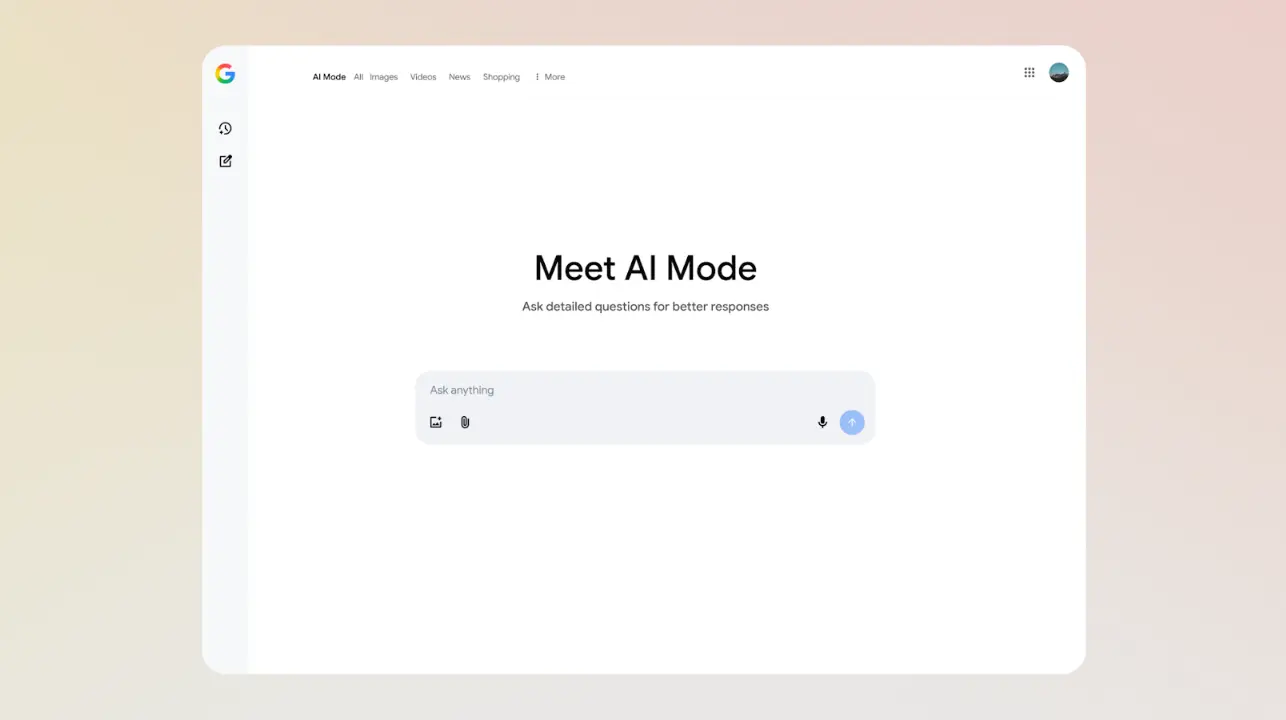Google has rolled out a major update to AI Mode in Search, making it highly visual. It now responds to conversational queries with rich, shoppable images for everything from product searches to design inspiration. This shift, powered by advanced AI, means businesses must prioritize high-quality visual content and detailed product data to remain visible in a search landscape that is rapidly moving beyond plain text.
What is This New Visual Feature in Google’s AI Mode?
Google’s AI Mode is no longer just a text-based conversational tool. It has been upgraded to understand and respond visually, turning vague ideas and conversational questions into a range of visual results. Think of it as a super-powered assistant that can ‘see’ what you mean. Instead of just describing a product, AI Mode now shows you, making search a lot more like a natural conversation with a helpful shopping expert.
This is especially powerful for shopping and inspiration. A user can now upload a photo or simply describe what they’re looking for—like “barrel jeans that aren’t too baggy”—and AI Mode will generate a grid of shoppable product images. Each image links directly to a retailer’s website, complete with reviews and pricing information.
How Does This Technology Actually Work?
This “breakthrough in visual search,” as Google calls it, is driven by a new “visual search fan-out” technique. Here’s a simple breakdown of what’s happening behind the scenes:
- Multimodal Understanding: Powered by Gemini 2.5’s advanced capabilities, the system understands queries that mix text and images. You can upload a picture of a pattern you like and ask for “throw pillows with this vibe.”
- Deep Analysis: The AI doesn’t just see the main object in an image. It recognizes subtle details, secondary objects, and the overall context.
- Multiple Background Queries: The “fan-out” technique runs many different queries in the background simultaneously to gather a comprehensive set of highly relevant visual results.
- The Shopping Graph: For commercial searches, it taps into Google’s massive Shopping Graph, a database of over 50 billion product listings that is updated constantly to ensure results are fresh and accurate.
The entire experience is conversational, allowing users to refine their search with follow-up requests like, “now show me some in ankle length.”
A Real-World Example in Action
As a marketing strategist, the opportunity here is massive. Previously, a user looking for home decor might search for “maximalist bedroom ideas” and get a list of blog posts. Now, that same query in AI Mode will return a beautiful grid of inspiring images. If a user clicks on an image featuring a specific lamp, they might be able to ask a follow-up question right there and find where to buy it. This closes the gap between inspiration and purchase instantly.
For an e-commerce store, this means your product could show up not just when someone searches for its name, but when it fits the “vibe” of an inspirational search.
| Search Type | Traditional Google Search | New AI Mode Visual Search |
| User Input | Keyword-focused (e.g., “blue velvet armchair”) | Conversational & vague (e.g., “a comfy statement chair for my living room”) |
| Results Format | Ten blue links, some shopping ads, image pack. | A rich, interactive grid of visual results. |
| Refinement | User must perform a new search with more keywords. | User can ask follow-up questions in the chat. |
| Business Goal | Rank your product page for specific keywords. | Get your product featured in inspirational and shoppable visual results. |
What Should Your Business Do to Prepare?
This update is a clear signal that the future of search is multimodal—a mix of text, images, and conversation. Ignoring the visual aspect of your online presence is no longer an option.
Here are four key actions for business owners, marketers, and developers:
- Invest in High-Quality Imagery: Your product photos are more critical than ever. Use high-resolution images from multiple angles, show products in context (lifestyle shots), and ensure they are visually appealing.
- Optimize Your Product Data: This is crucial. Ensure your Google Merchant Center feed is complete and detailed. Use descriptive titles and write rich, natural-language descriptions that answer potential customer questions. Think about how a customer would describe your product to a friend and use that language.
- Embrace Multimodal Content: Don’t just rely on text. Google has explicitly stated that multimodal success requires more than text. Support your product pages and articles with high-quality images and even videos. Make sure images have descriptive alt text and captions.
- Structure Your Data: Use schema markup (structured data) on your product pages. This helps Google’s crawlers understand the details of your products—like price, availability, and reviews—in a machine-readable format, making it easier for them to be pulled into these new visual results.
What’s the Bottom Line?
Google is transforming its search engine from a simple information retriever into an intelligent discovery tool. This new visual-first approach in AI Mode is a massive opportunity for businesses that can adapt. By focusing on creating a rich, visually compelling, and data-driven shopping experience, you can position your brand to be not just found, but seen by a new generation of shoppers.
FAQ Section
Q: Is this update rolling out globally?
A: Currently, the new visual search feature in AI Mode is rolling out in English for users in the U.S.. Google is expected to expand it to more regions and languages in the future.
Q: Do I need to pay for my products to appear in these visual results?
A: The visual results in AI Mode are generated organically based on relevance, pulling from Google’s extensive Shopping Graph and image corpus. It is not an ad placement.


